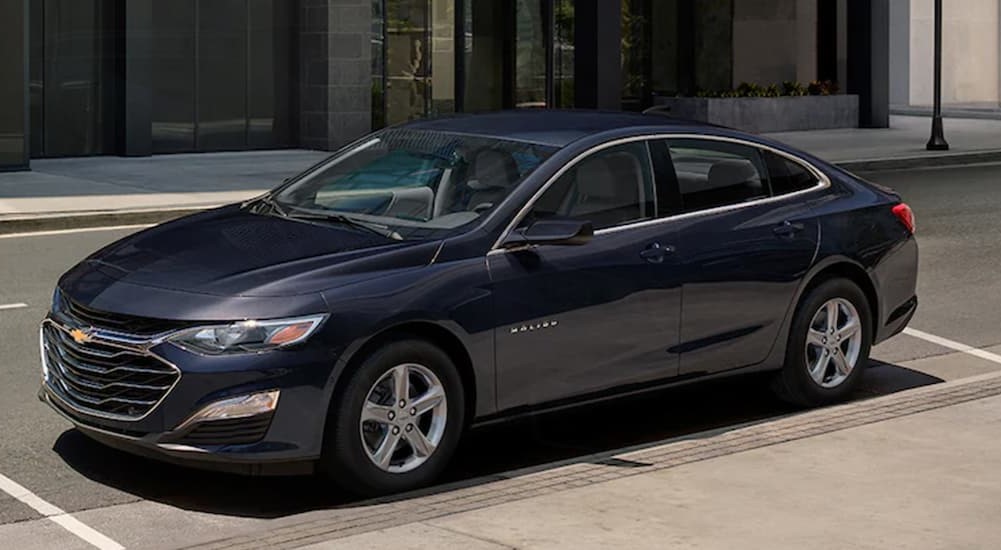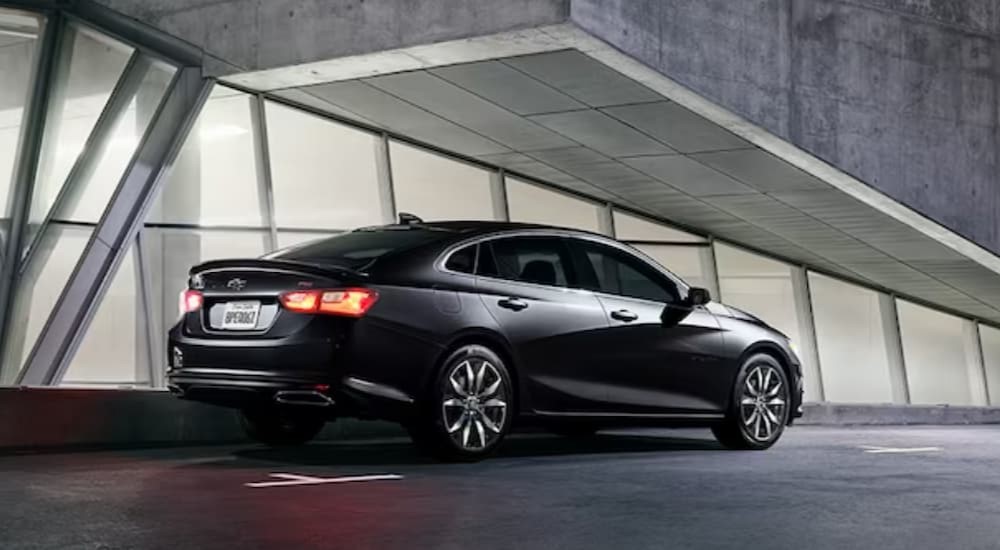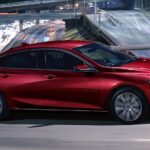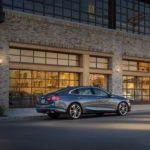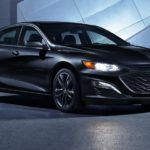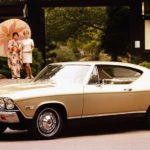Can you guess which midsize sedan experienced the highest percentage increase in sales volume during the last few model years? Here’s a hint – it wasn’t the Toyota Camry or the Honda Accord. As unlikely as it sounds, the Chevy Malibu saw a nearly 394 percent year-over-year increase in sales in the 2022 model year, resulting in a 15 percent share of the midsize segment. Meanwhile, the category’s juggernauts, especially the Accord, floundered.
What accounts for the Malibu’s sharp increase in sales volume, and what can the Bow Tie brand expect from the 2024 Chevy Malibu this model year? Many factors contributed to the 2022 model year’s sales shuffle. Most notably, 2022 marked the last year of the tenth-generation Accord. The aging nameplate saw a sharp decrease in unit sales as a result. Ditto for the Camry, which showed signs of aging as it neared the end of its eighth generation.
Despite the state of its primary competition, the Malibu’s remarkable sales spike took Chevy – and the industry – by surprise. Rumors were swirling about the practical sedan’s imminent discontinuation, and Chevy had already decided to truncate the production of the 2023 Malibu. Ultimately, production was extended in 2023 after a strong first quarter of unit sales, and though Chevy has launched the 2024 Malibu with few changes, many expect the trend to continue. What accounts for sedan buyers’ revived interest in the Malibu when the competition had historically trounced Chevy’s stoic midsize entrant? Here’s a deep dive into what the sales numbers tell us.
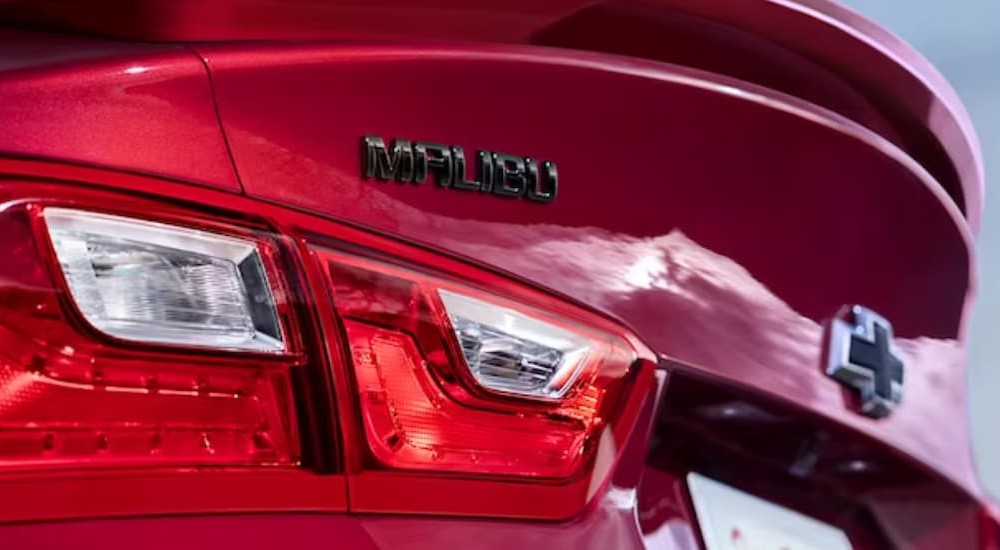
Buyers Get Their Info Online but Don’t Always Listen to Reviews
Scroll through the content of Car and Driver’s 2022 reviews of the Camry, Accord, and Malibu, and it’s clear that Malibu buyers weren’t giving them much credence. Car and Driver bestowed a perfect 10/10 rating on the 2022 Camry and gave the dated 2022 Accord a generous 8.5/10. The Malibu? A scant 6/10 and a scathing summary that relegated the Malibu to “solid rental-counter selection” purgatory. Still, Motor Trend recognized the Malibu’s athletic styling and applauded the optional 250-hp turbocharged engine for its “strong acceleration.”
Review sites often recommend specific trims of a new model by considering criteria like value and the mix of standard features. For 2022, Car and Driver recommended the Malibu LT, third from the top of the lineup and priced at around $27k. Of the six available Accord trims, reviewers chose the mid-range Sport, which came with a $30k price tag. If buyers followed Car and Driver’s advice for the best overall 2022 Camry trim, they’d have to shell out more than $34,000. In fairness, some of the factors reviewers considered weren’t apples-to-apples, but given value and affordability are on the minds of most midsize sedan buyers, the price differences between Car and Driver’s favorite trims are notable.
While not all buyers consider them gospel, automotive review sites remain a critical part of their decision-making process. According to Porch Group Media, conducting online research is the most common activity among shoppers. Performing comparisons is one of the most common online pre-purchase behaviors. As Millenials and Gen-Z buyers age into the new car-buying market, reliance on online data and information will likely increase, as evidenced by a 2016 J.D. Power study that looked at how much time shoppers were spending online vs. in person. An estimated 33 percent of total shopping time, according to the study, was conducted on a mobile device.
Buyers Consider Many Factors to Determine the Sedan With the Best Value
Despite cherry-picking a handful of positive attributes to share about Malibu, most automotive journalists spotlighted the competition – and sometimes, unfairly. For example, MotorBiscuit compared the 2022 Malibu and the 2022 Accord, ultimately choosing the Accord for its superior fuel economy. On the surface, cost-conscious buyers might head straight for a Honda dealer, but a closer look reveals that the fuel-efficiency comparison wasn’t exactly a fair fight.
MotorBiscuit compared the Malibu’s 29 MPG max combined rating (with the base four-cylinder engine) with that of the Accord Hybrid, which came in at 47 MPG. Clearly, a hybrid powertrain will outperform a combustion engine in fuel efficiency every time, but most hybrid models cost a lot more. This was certainly the case for the 2022 Honda Accord Hybrid. Judging the best value by looking at fuel economy alone didn’t give buyers the whole picture. As the sales numbers reflect, many 2022 buyers didn’t fall for it.
What the review doesn’t tell shoppers is that they’ll shell out around $1,700 more for the Accord Hybrid vs. the base Accord with the standard 1.5-liter four-cylinder. The 2022 Malibu LS, the base model in the 2022 lineup, came with a starting price tag of under $25,000. The base Accord LX and the Accord Hybrid started at around $28k and $29k, respectively. Would fuel cost savings make up for the substantial price difference? Hardly. The 2022 Malibu LS offered the most cost-effective option for budget buyers.
Sedans Aren’t Going Away Anytime Soon
Chevy doubled down in the 2024 model year with the Malibu, offering a minimally changed ninth-gen version with a low $25k starting MSRP. Though it faces stiff competition from the recently redesigned Accord, the 2024 Camry stays the same – a redesign is expected in 2025 – which levels the playing field against the category’s multi-year top seller. More rumors coming out of Detroit indicate that Chevy will fully redesign the Malibu next year.
Whether that rumor bears out, even the hint of a plan involving investment in Chevy’s last remaining sedan indicates the automaker remains bullish on the sedan category. So, what does the soon-to-arrive brand-new Camry and Chevy’s renewed confidence in the Malibu say about sedans overall? Don’t count them out quite yet. Several industry factors forced buyers to take a closer look at sedan alternatives during the COVID era, including chip shortages and supply-chain issues that impacted SUV supplies.
The lack of inventory initially pushed buyers toward less popular models and body styles, but even now, as inventory levels for the industry’s best-selling SUVs adjust back to pre-pandemic levels, some buyers are sticking with the sedan. Maybe these buyers regained a love for the low-slung aerodynamics only a car can provide, or they’re attracted to their lower price tag. Gear Patrol points out that sedans are “better-performing, more practical, and more versatile.” Further evidence that the sedan is here to stay? Many of the top-selling EVs, including the Tesla Model 3, are sedans.
The 2024 Malibu’s Compelling Argument
For 2024, Chevy offers the Malibu in a straightforward four-trim lineup. Car and Driver stick with its 6/10 rating, but clearly, gearhead reviews aren’t the best indicator of popularity. Chevy tosses in standard LED headlights and taillights, remote start, an 8-inch infotainment touchscreen, and wireless Apple CarPlay and Android Auto across the trim range. If buyers want these features on the 2024 Accord or Camry, they’ll have to step up to a more expensive trim.
Choosing a base Accord LX will cost buyers nearly $3,000 more, and they’ll have to live with a smaller 7-inch screen, taillights that don’t use LED, and smartphone connectivity that requires a cord. A quick look at the 2024 Camry LE, Toyota’s base model, and the roughly $1,400 higher price tag buys a 7-inch touchscreen, wired Apple CarPlay and Android Auto, and no LED tail lights. The Malibu’s trunk is larger than the Camry’s, offering more front headroom than the Accord. While these differences may seem small, they’re important to many buyers.
What’s next for the upstart sedan category? Expect plenty of electrified versions of iconic models and new entrants that lean into the aerodynamics of the sedan body style to optimize driving range. Will the 2025 Malibu arrive fully redesigned and ready to compete with popular imports like the Camry and the Accord? Signs point to a yes, which opens up the potential for yet another sales shake-up in the industry’s most resilient category.
